*NURSING > HESI > HESI Study Module 2 Health Promotion (A Graded) Latest Questions and Complete Solutions (All)
HESI Study Module 2 Health Promotion (A Graded) Latest Questions and Complete Solutions
Document Content and Description Below
HESI Study Module 2 Health Promotion (A Graded) Latest Questions and Complete Solutions Questions 1.ID: A nurse performing a physical assessment of a client gathers both subjective and objective data.... Which of the following findings would the nurse document as subjective data? The client appears anxious. Incorrect Blood pressure is 170/80 mm Hg. The client states that he has a rash. Correct The client has diminished reflexes in the legs. Rationale: The purpose of a physical assessment is to collect both subjective and objective data. Subjective data, collected during the health history, consist of information that the client gives about himself or herself. Objective data are obtained through physical examination and vital signs measurements, what the nurse observes, and laboratory study and diagnostic test results. Test-Taking Strategy: Use the process of elimination. Eliminate the options that are comparable or alike and include data that the nurse would obtain during the physical examination. Review the difference between subjective and objective data if you had difficulty with this question. Reference: Jarvis, C. (2008). Physical examination and health assessment (5th ed., pp. 2, 55). St. Louis: Saunders. Cognitive Ability: Applying Client Needs: Health Promotion and Maintenance Integrated Process: Communication and Documentation Content Area: Health Assessment/Physical Exam Awarded 0.0 points out of 1.0 possible points. 2.ID: A nurse is reviewing the findings of a physical examination that have been documented in a client's record. Which piece of information does the nurse recognize as objective data? The client is allergic to strawberries. The last menstrual period was 30 days ago. The client takes acetaminophen (Tylenol) for headaches. A 1 × 2-inch scar is present on the lower right portion of the abdomen. Correct Rationale: Subjective data, collected during the health history, consist of information that the client gives about himself or herself. Objective data are obtained through physical examination and vital signs measurements, what the nurse observes, and laboratory study and diagnostic test results. Allergies, the date of the client’s last menstrual period, and the reported use of medication for headaches are all subjective data. Test-Taking Strategy: Use the process of elimination. Eliminate the options that are comparable or alike and include data that the nurse would obtain from the client during the health history. Review the difference between subjective and objective data if you had difficulty with this question. Reference: Jarvis, C. (2008). Physical examination and health assessment (5th ed., pp. 2, 55). St. Louis: Saunders. Cognitive Ability: Understanding Client Needs: Health Promotion and Maintenance Integrated Process: Nursing Process/Assessment Content Area: Health Assessment/Physical Exam 3.ID: A nurse is making an initial home visit to a client with chronic obstructive pulmonary disease who was recently discharged from the hospital. Which type of database does the nurse use to obtain information from the client? Episodic Follow-up Emergency Complete Correct Rationale: A complete database includes a complete health history and a full physical examination. It describes the client’s current and past state of health and forms a baseline against which all future changes can be measured. The complete database is collected in a primary care setting such as a pediatric or family practice clinic, an independent or group private practice, a college health service, a women’s healthcare agency, a visiting nurse agency, or a community health agency. An episodic database is compiled for a limited or short-term problem and is focused mainly on one problem or one body system. A follow-up database is used to evaluate an identified problem at regular and appropriate intervals. An emergency database involves the rapid collection of the data that are often compiled as lifesaving measures are being performed. Test-Taking Strategy: Use the process of elimination. Noting the words “initial home visit” in the question will direct you to the correct option. Review the different types of databases if you had difficulty with this question. Reference: Jarvis, C. (2008). Physical examination and health assessment (5th ed., p.8). St. Louis: Saunders. Cognitive Ability: Applying Client Needs: Health Promotion and Maintenance A nurse is examining a 25-year-old client who was seen in the clinic 2 weeks ago for symptoms of a cold and is now complaining of chest congestion and cough. The nurse should proceed with the examination by collecting: Data related to follow-up care A complete (total health) database Data related to the respiratory system Correct Data related to the treatment for the cold Rationale: An episodic database is compiled for a limited or short-term problem and is focused mainly on one problem or body system. The history and examination will be focused primarily on the respiratory system in this client. A complete database includes a complete health history and a full physical examination. It describes the client’s current and past state of health and forms a baseline against which all future changes can be measured. A follow-up database is used to evaluate an identified problem at regular and appropriate intervals. Test-Taking Strategy: Use the process of elimination. Focusing on the data in the question and noting the words “now complaining of chest congestion and cough” will direct you to the correct option. Review the different types of databases if you had difficulty with this question. Reference: Jarvis, C. (2008). Physical examination and health assessment (5th ed., p. 8). St. Louis: Saunders. Cognitive Ability: Applying Client Needs: Health Promotion and Maintenance A client is brought to the emergency department after a motor vehicle accident. The client is alert and cooperative but has sustained multiple fractures of the legs. How should the nurse proceed with data collection? Collect health history information first, then perform the physical examination Ask health history questions while performing the examination and initiating emergency measures Correct Collect all information requested on the history form, including social support, strengths, and coping patterns Perform emergency measures and not ask any health history questions until the client's fractures have been treated in the operating room Rationale: If the client is alert and cooperative and if the situation is not life-threatening, the nurse should attempt to obtain as much subjective and objective data as possible while caring for the client. Collecting health history information and then performing the physical examination does not address the priority, which is treating the client. Collecting all data requested on the history does not specifically address the client’s immediate problems. Performing emergency measures and not asking any health history questions does not address data collection before treatment. Test-Taking Strategy: Use the process of elimination. Focus on the data in the question and note the words “alert and cooperative.” Noting that the client has not sustained life-threatening injuries will direct you to the correct option. Review the different types of databases if you had difficulty with this question. Reference: Jarvis, C. (2008). Physical examination and health assessment (5th ed., p. 8). St. Louis: Saunders. Cognitive Ability: Applying Client Needs: Health Promotion and Maintenance Integrated Process: Nursing Process/Assessment Content Area: Health Assessment/Physical Exam Awarded 0.0 points out of 1.0 possible points. [Show More]
Last updated: 1 year ago
Preview 1 out of 103 pages
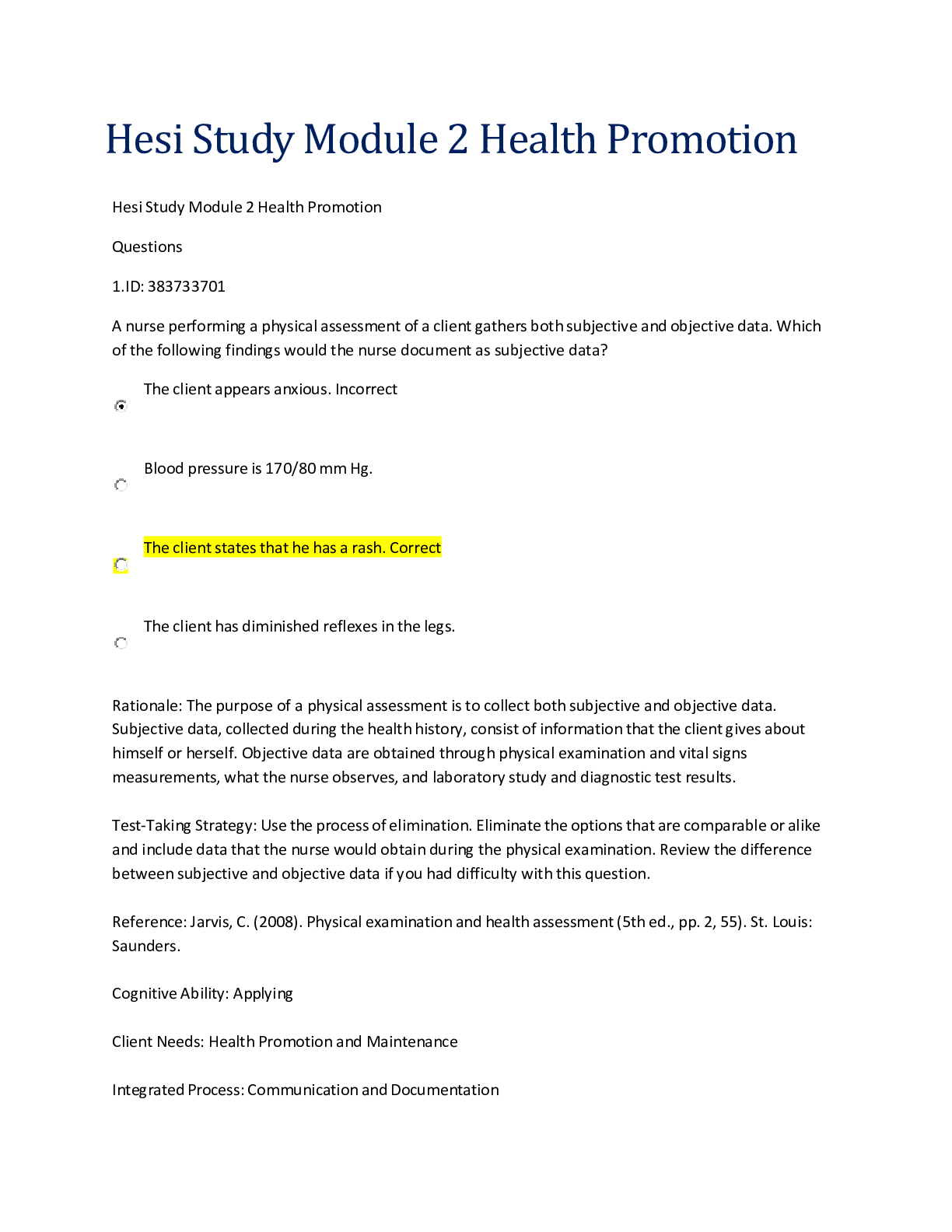
Reviews( 0 )
Document information
Connected school, study & course
About the document
Uploaded On
Jun 07, 2021
Number of pages
103
Written in
Additional information
This document has been written for:
Uploaded
Jun 07, 2021
Downloads
0
Views
34


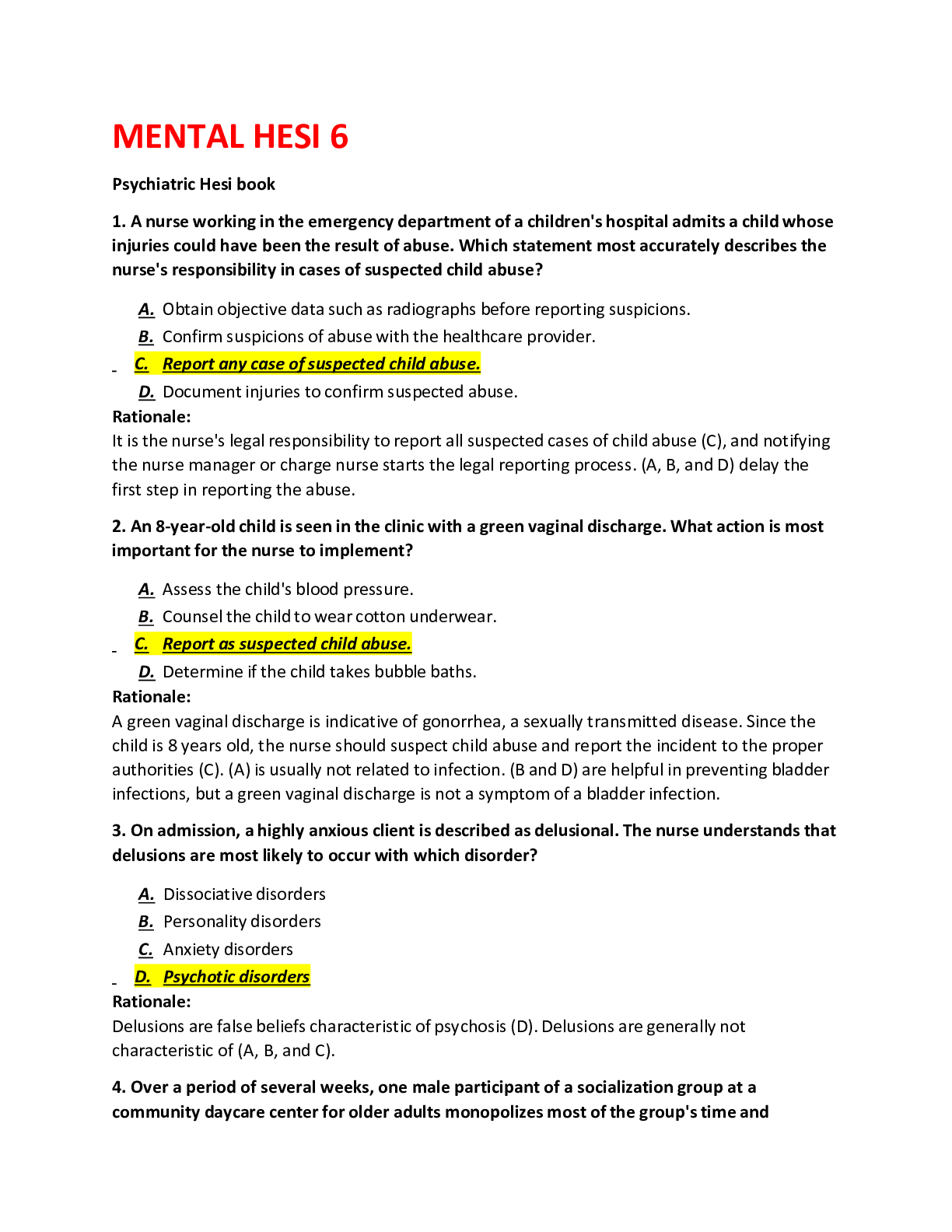
.png)
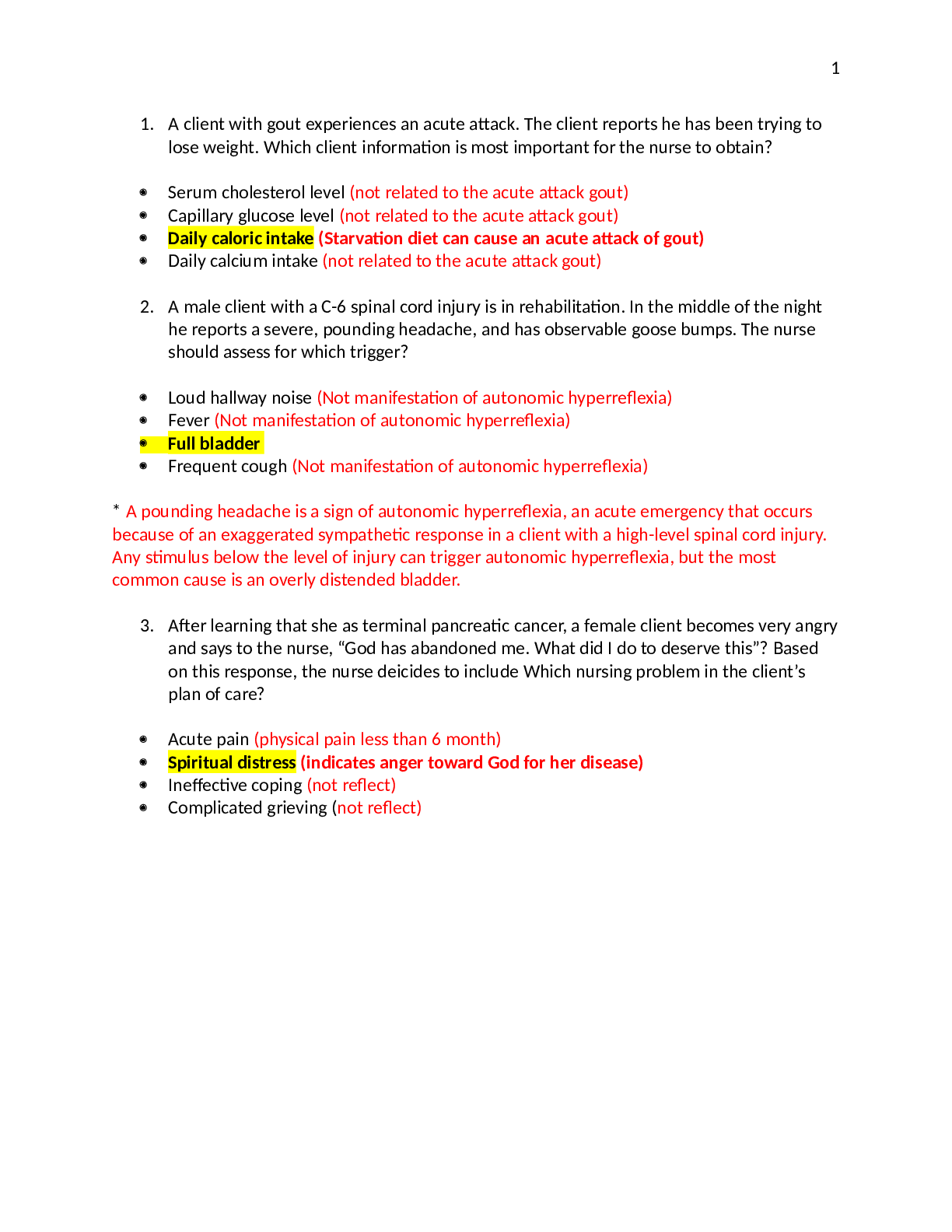
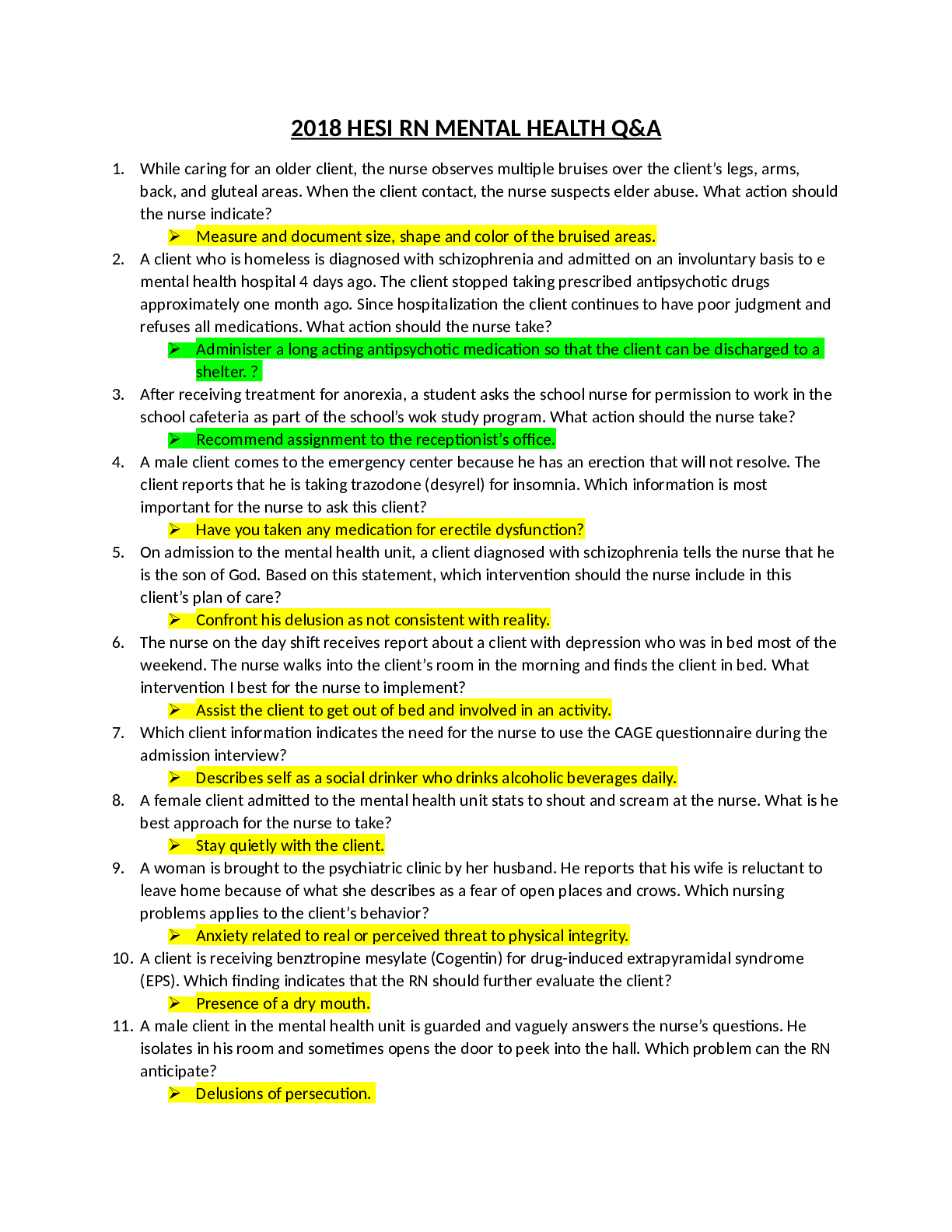
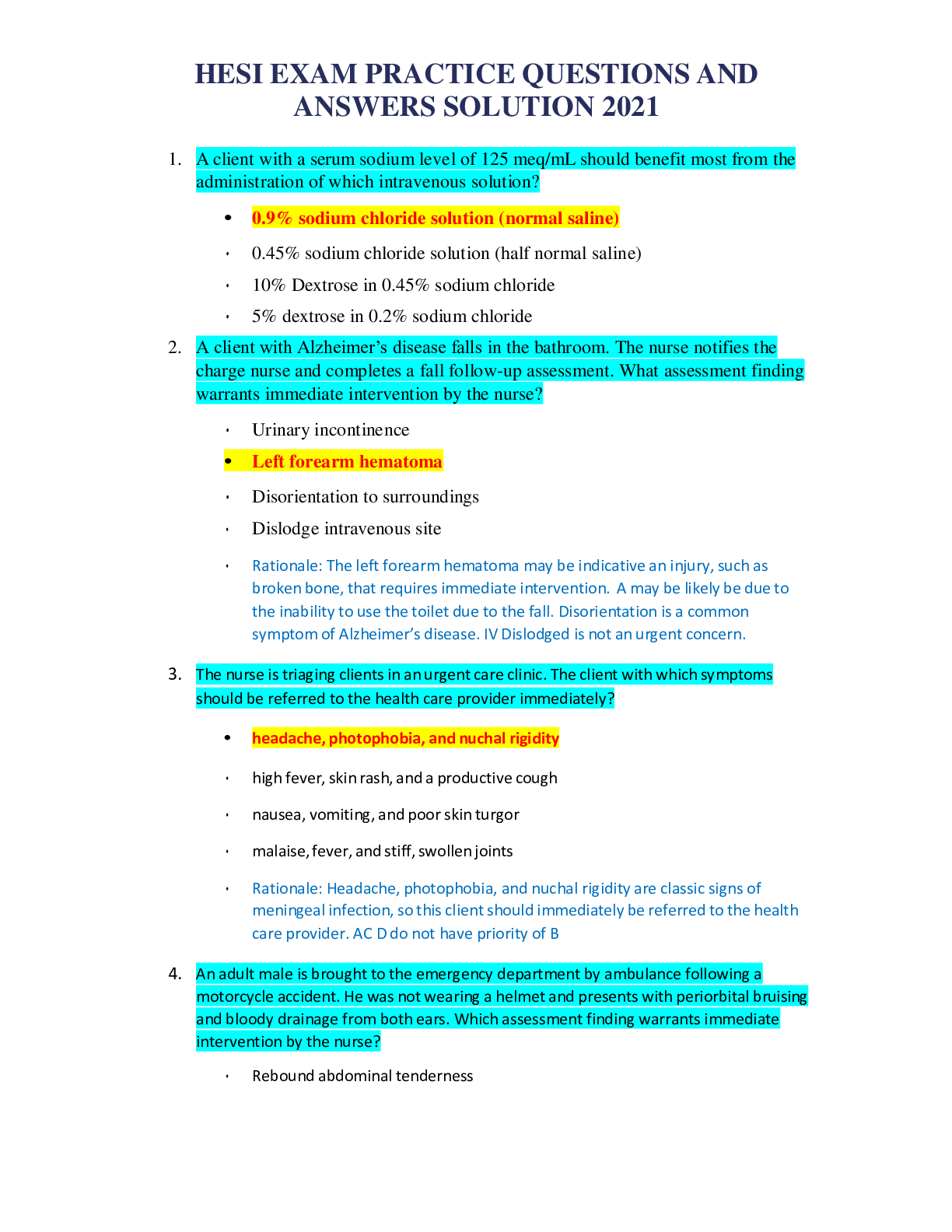
.png)

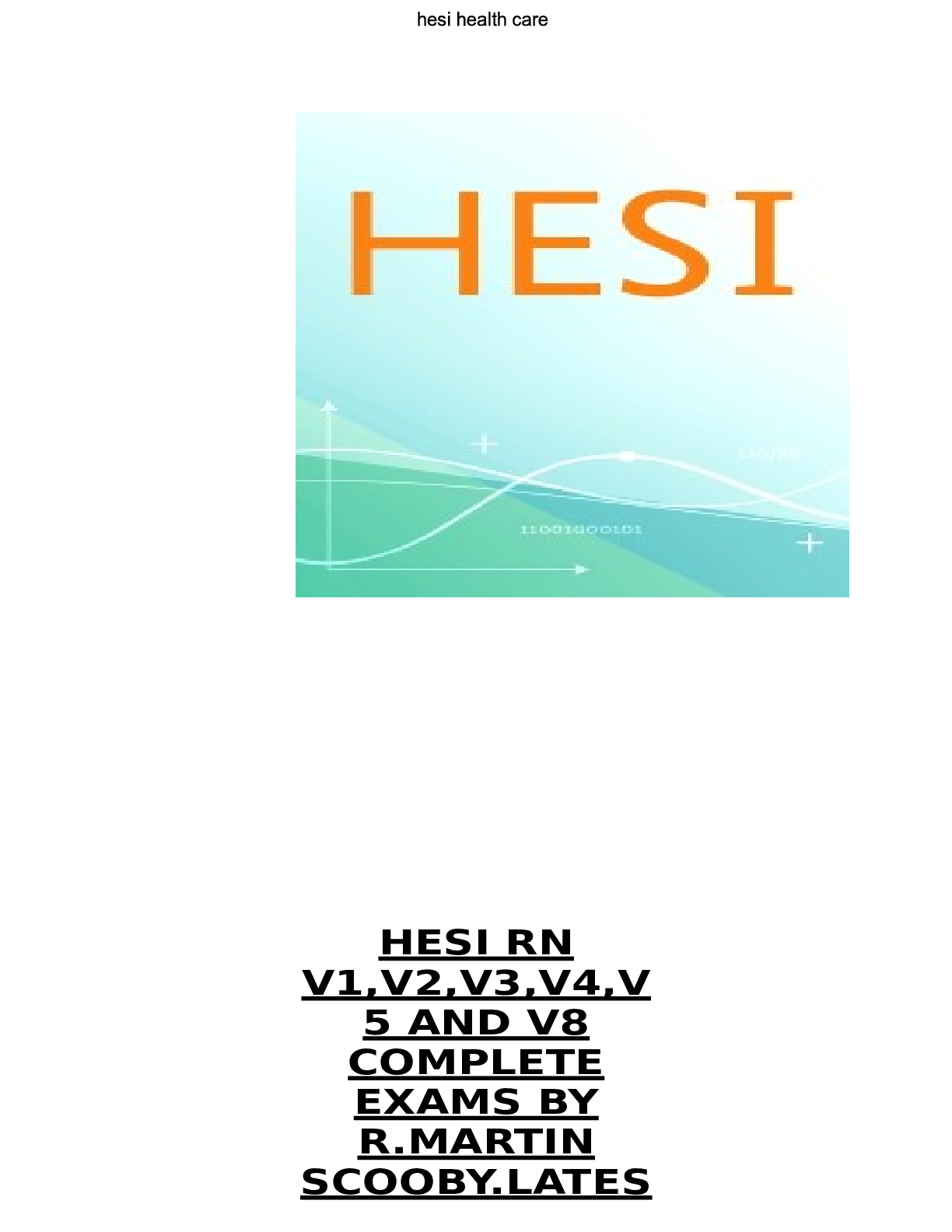
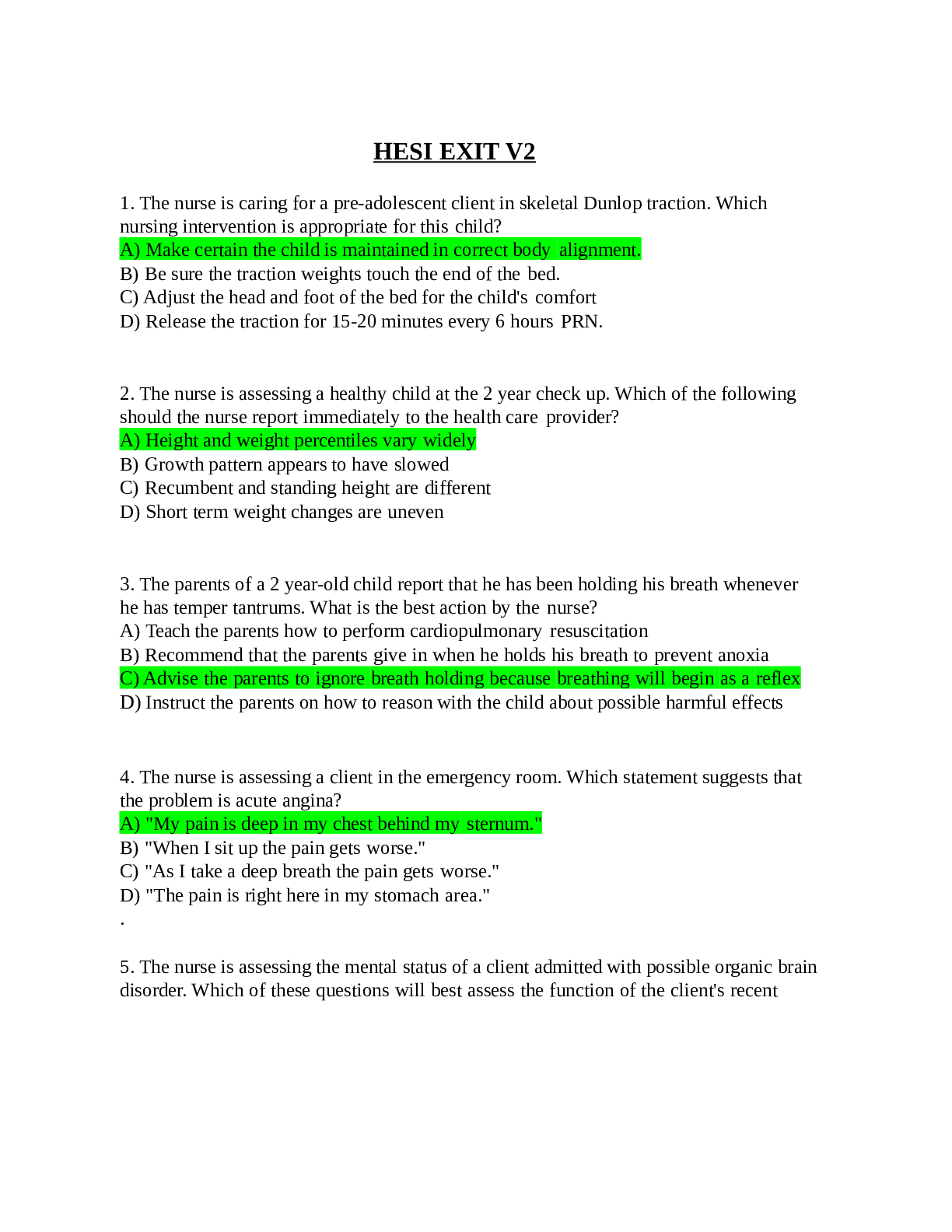
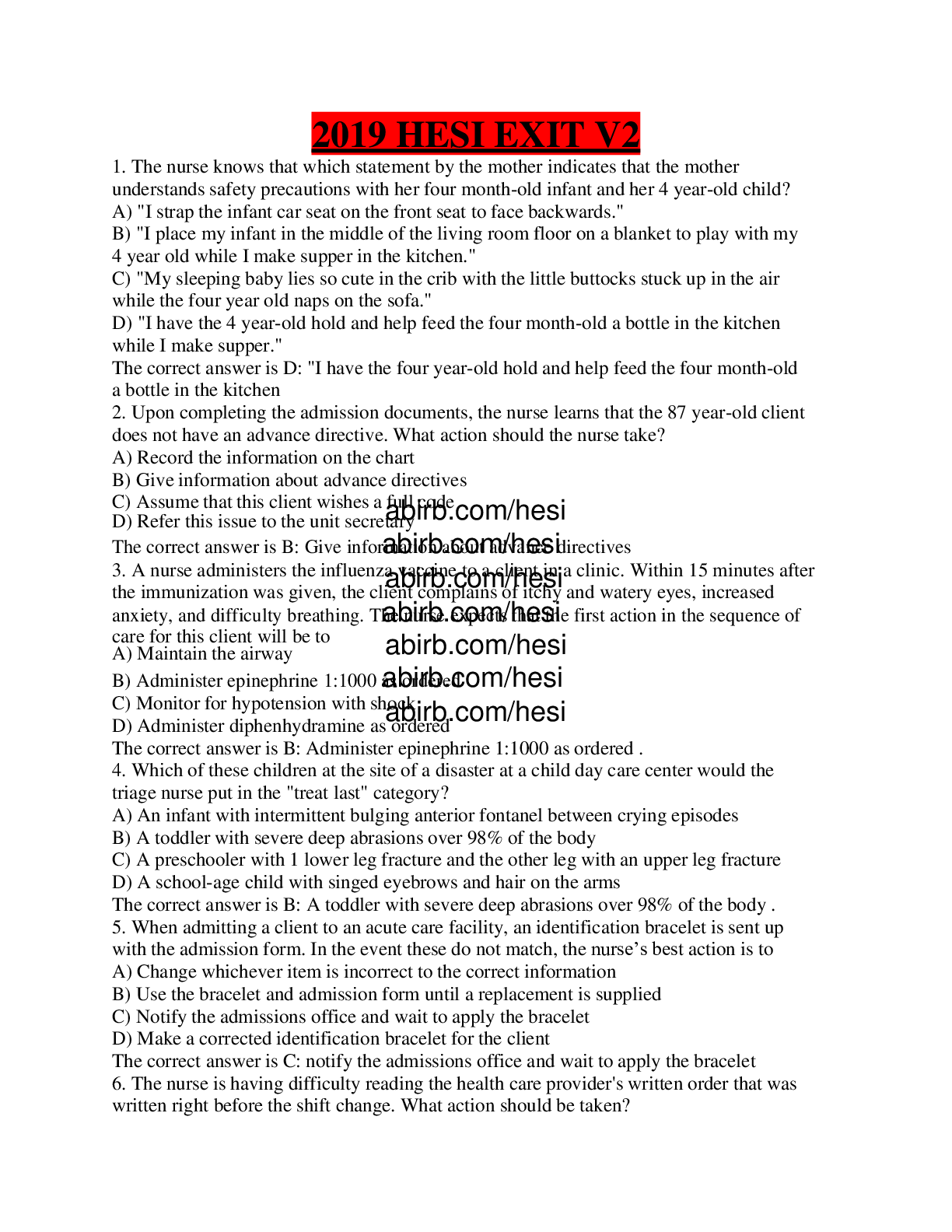
.png)
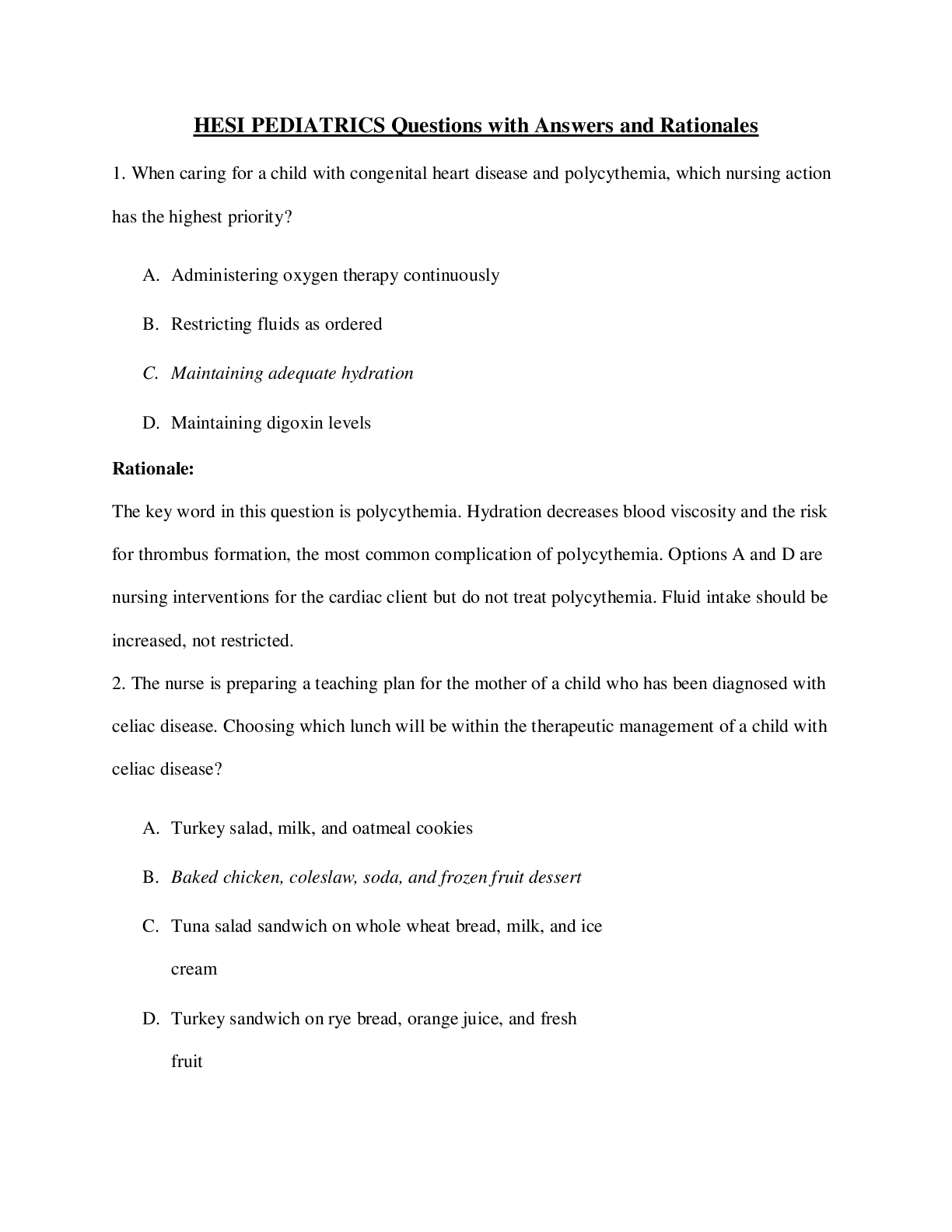
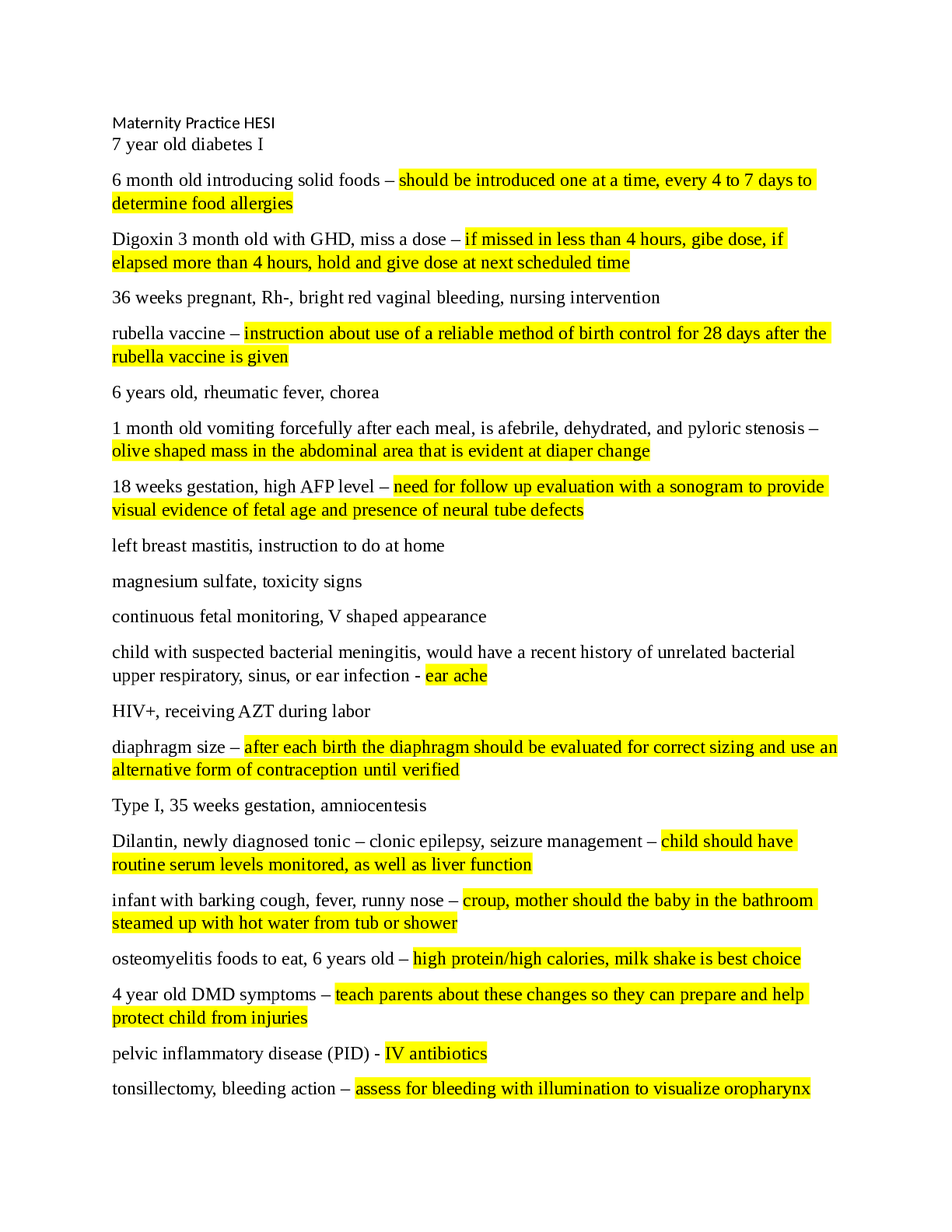
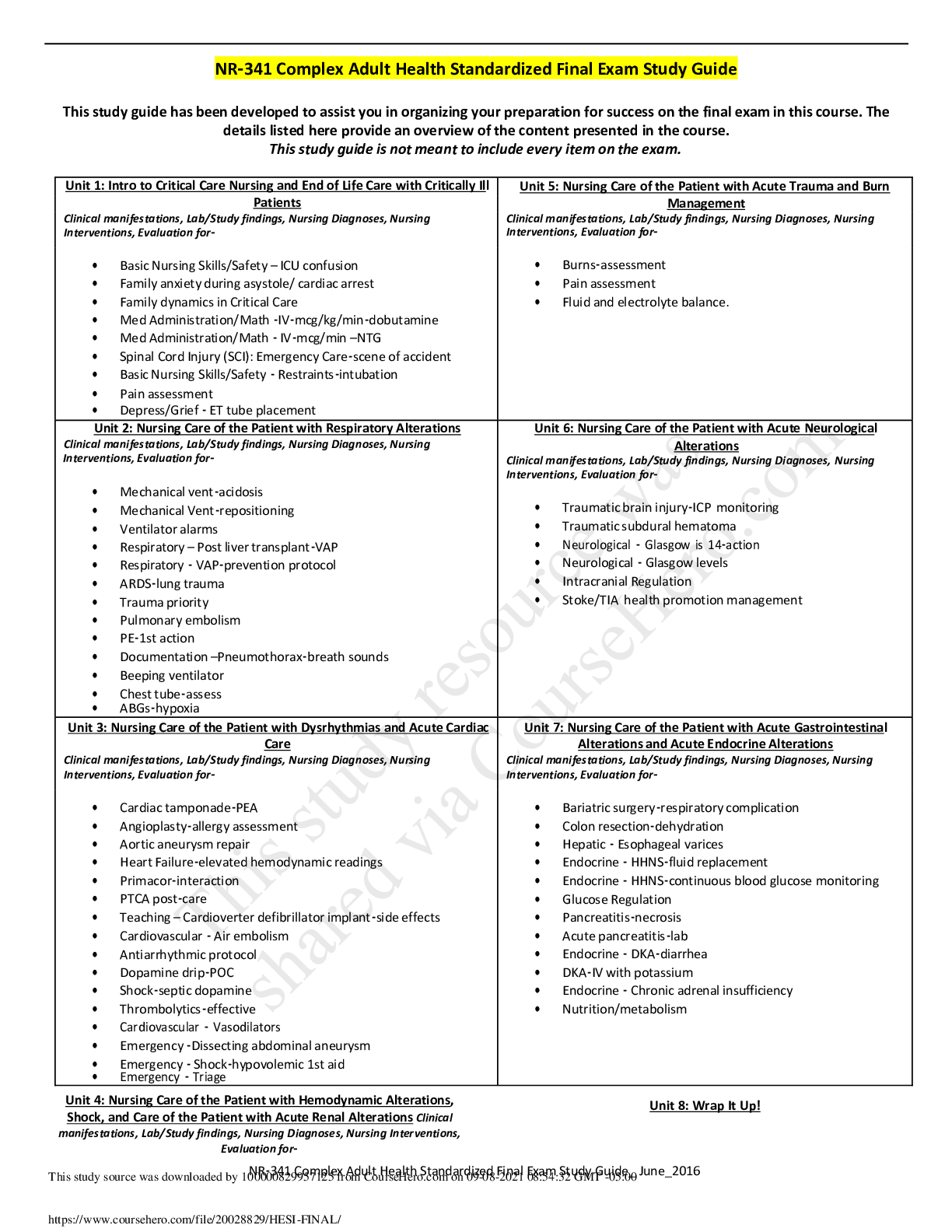
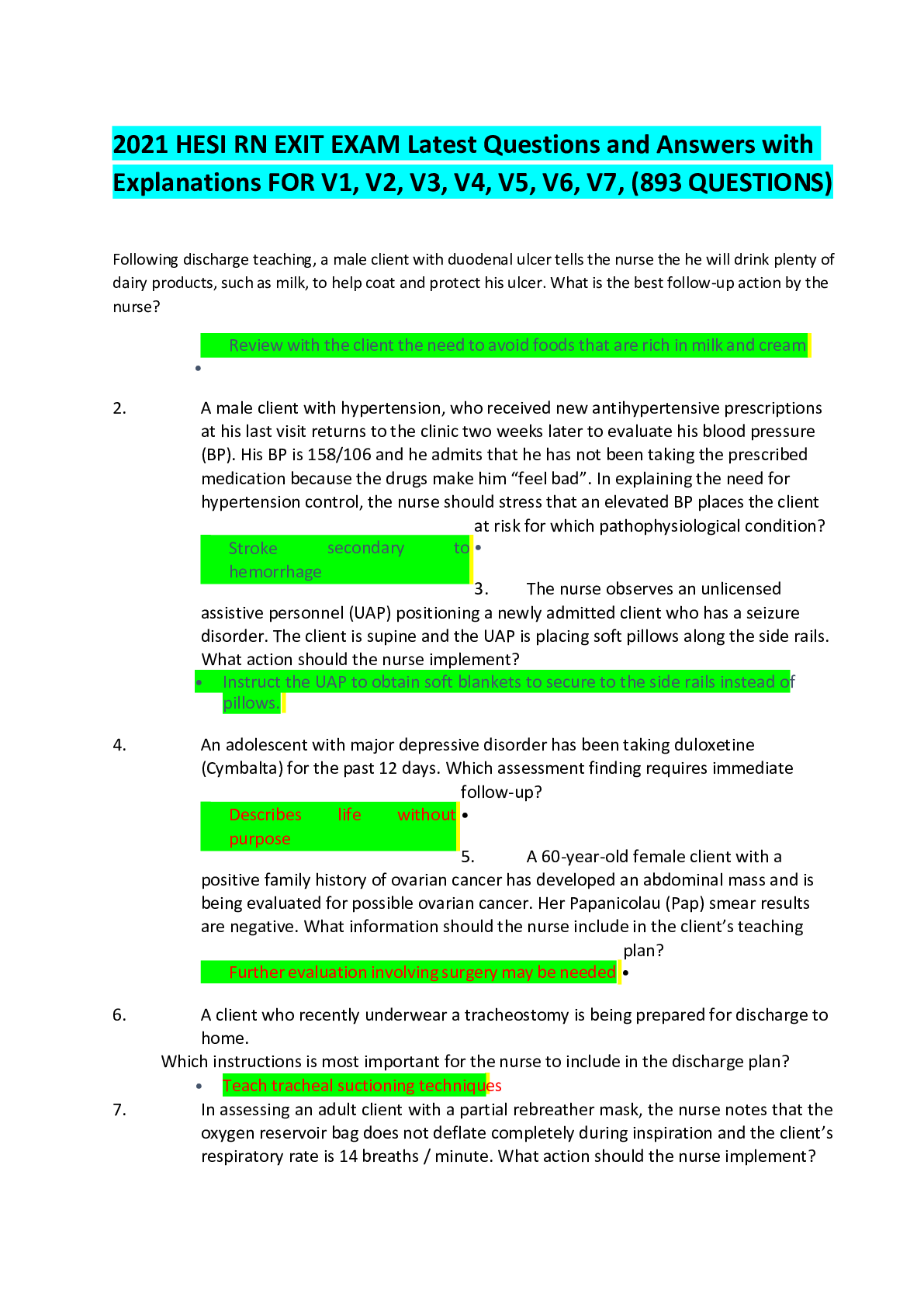
, Latest Questions and Answers with Explanations, All Correct Study Guide, Download to Score A.png)
, Latest Questions and Answers.png)
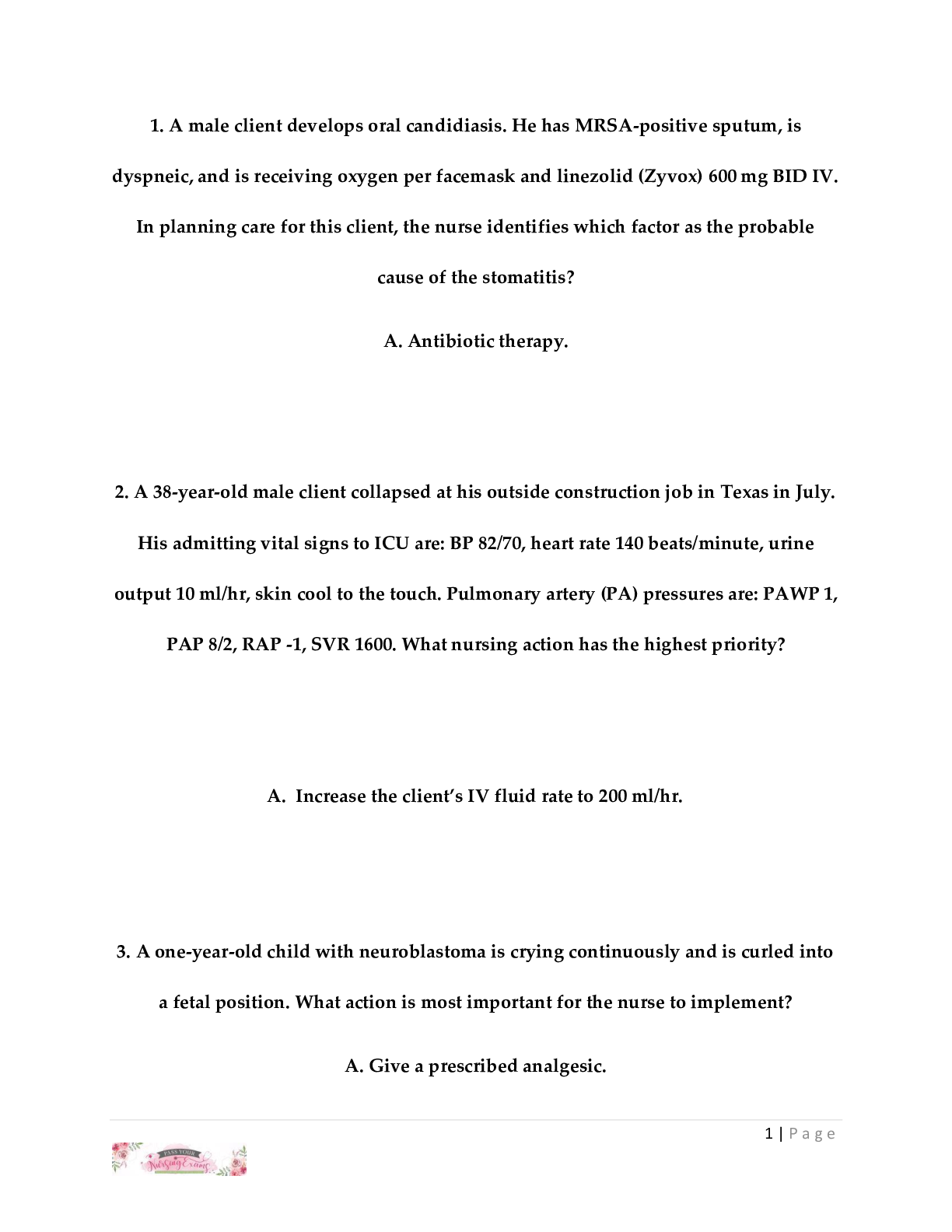
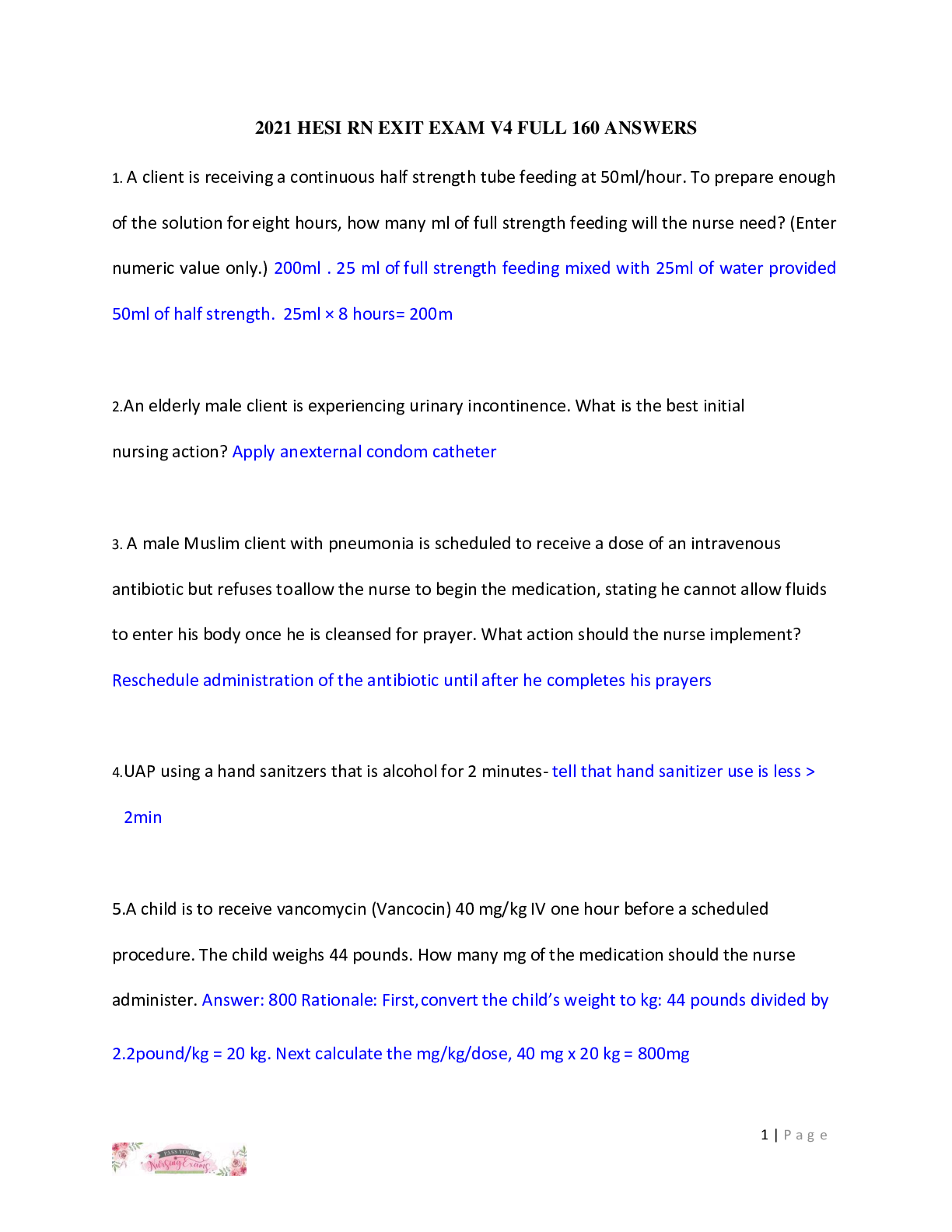
 LATEST QUESTIONS AND COMPLETE SOLUTIONS.png)
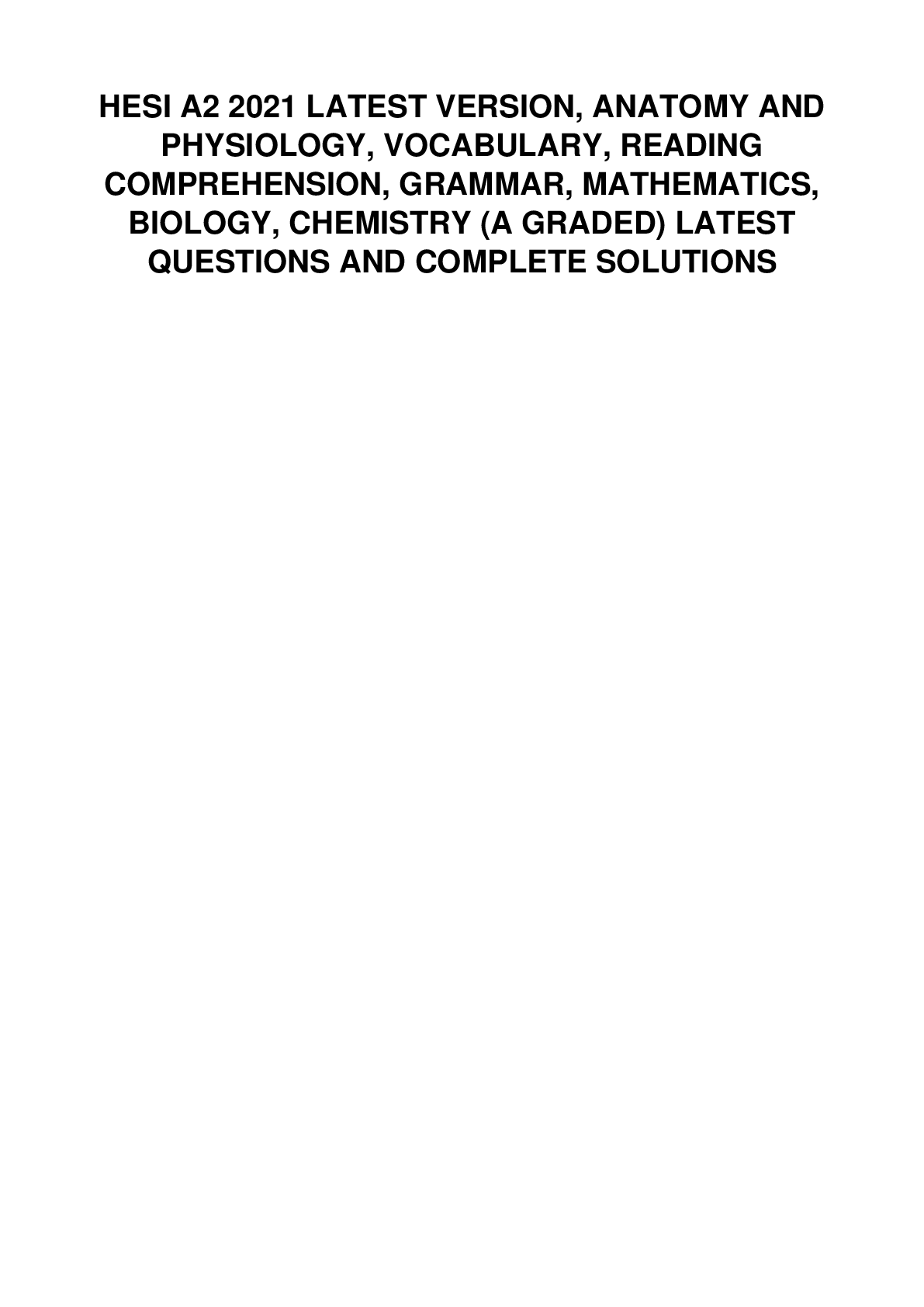
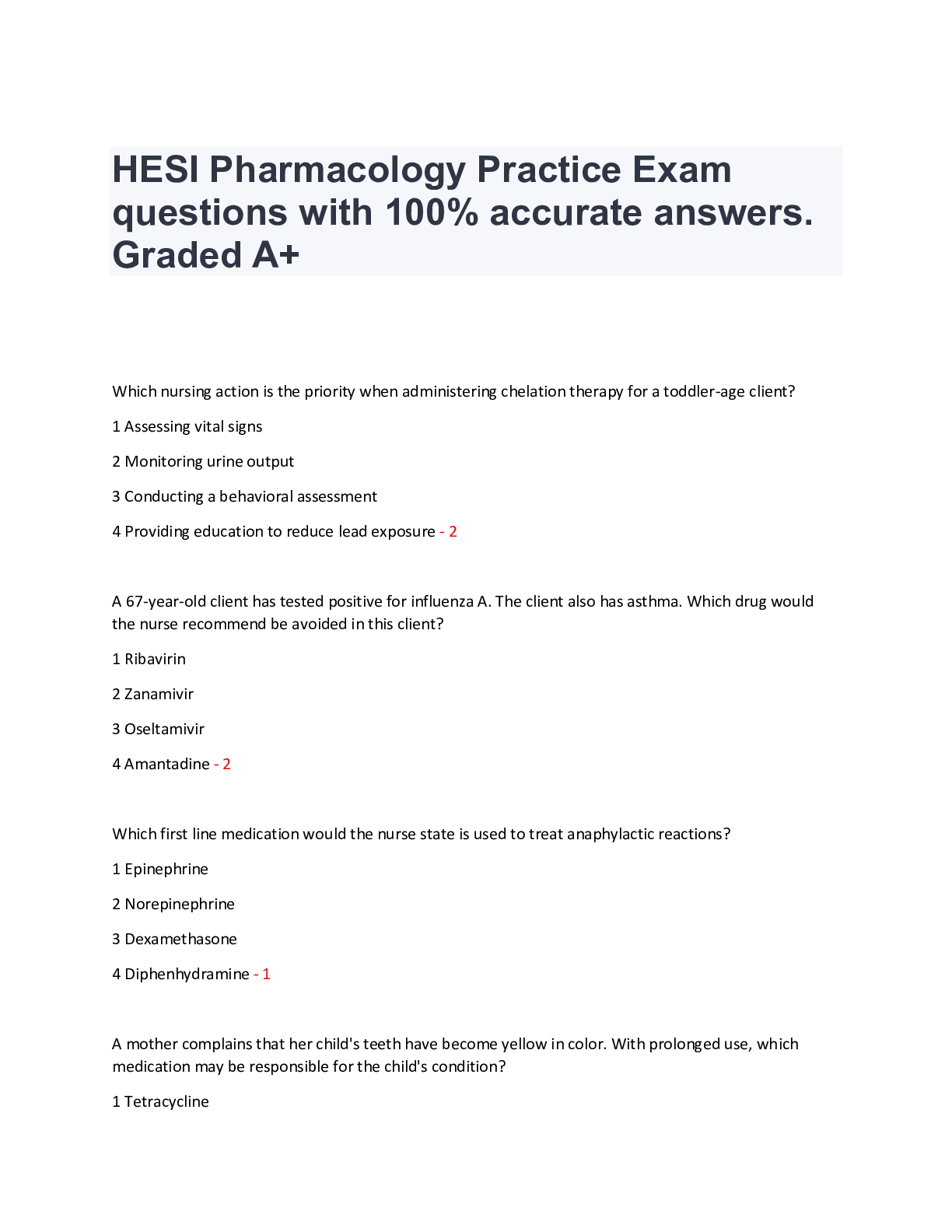

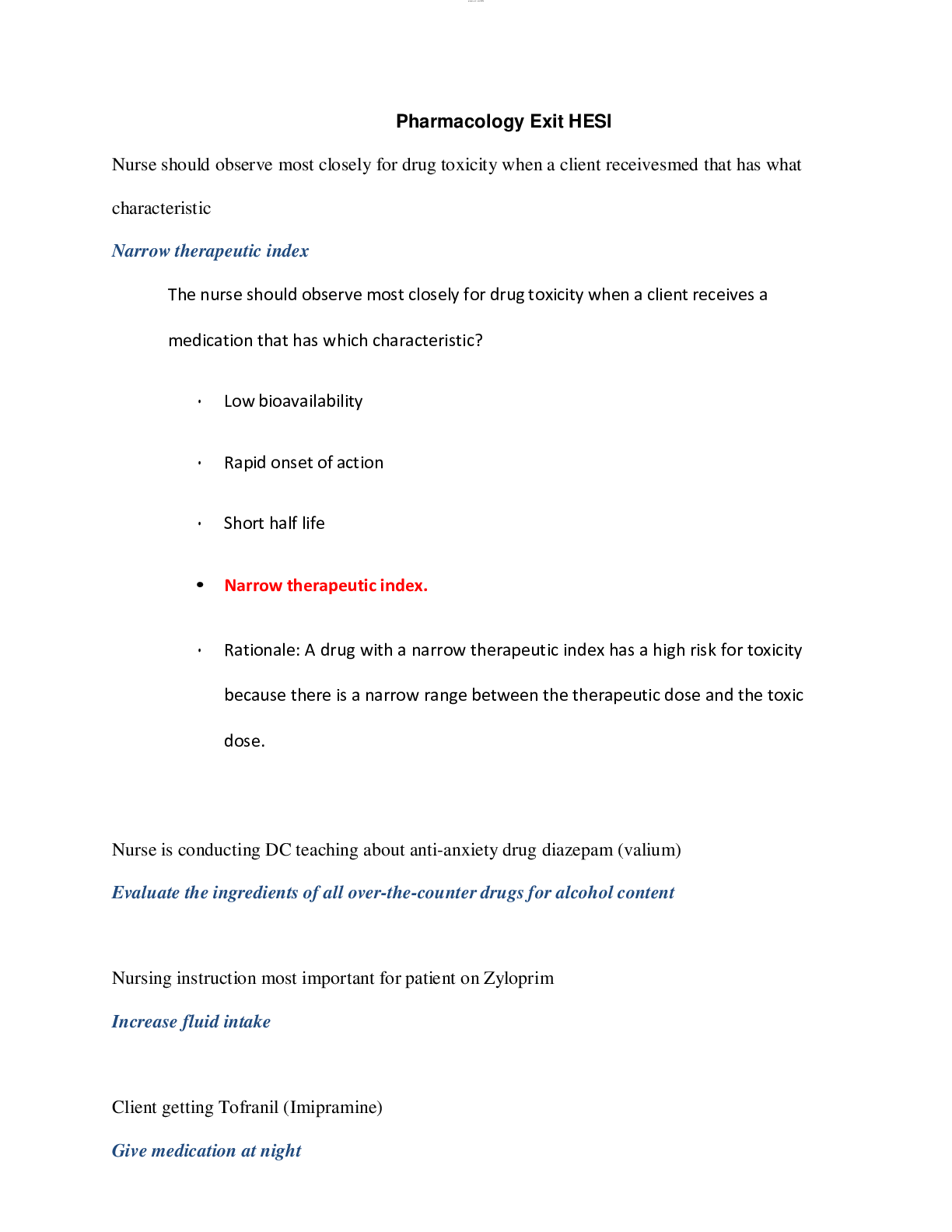
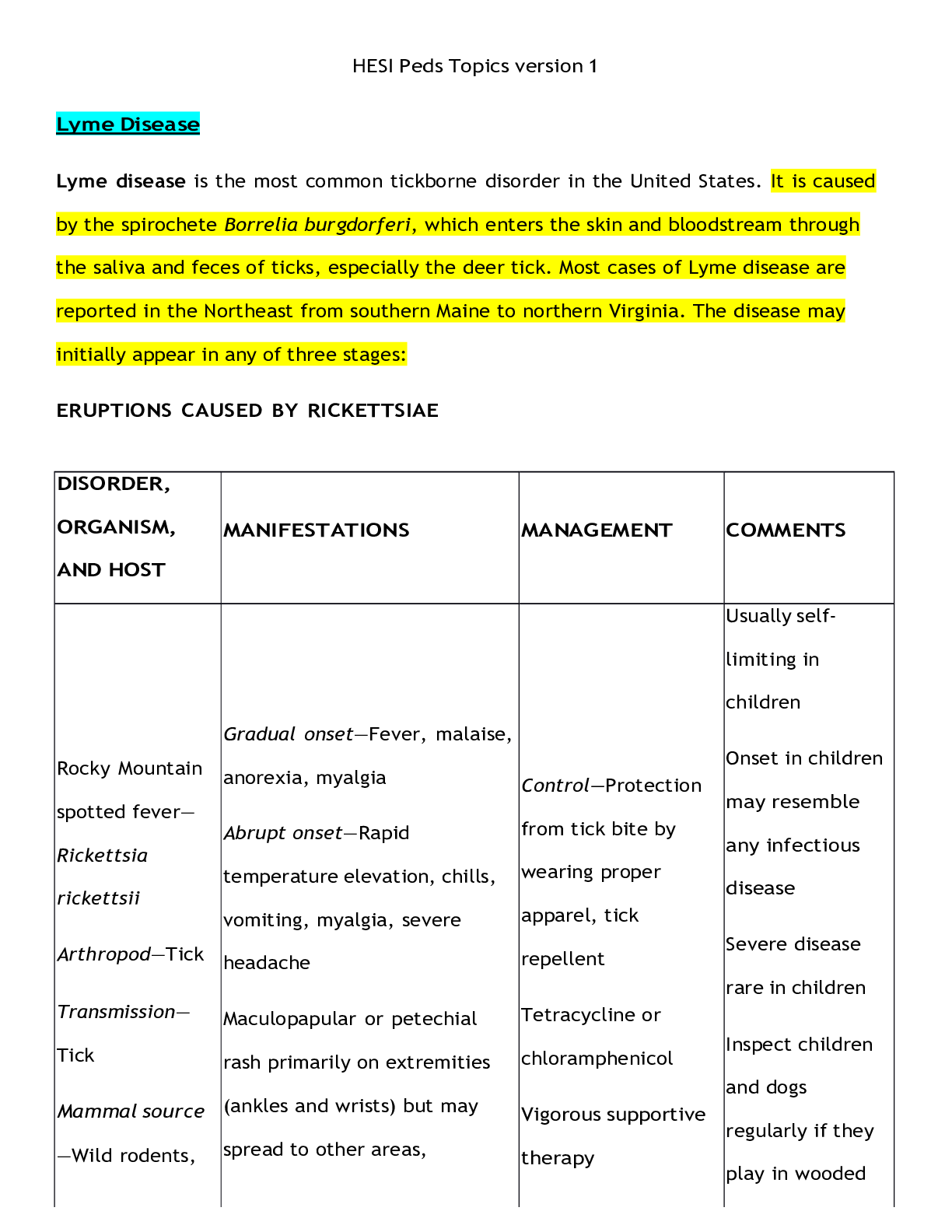
, Latest Questions and Answers with Explana.png)
, Latest Questions and Answers with Explanations, All Correct Study Guide, Download to Score A.png)


